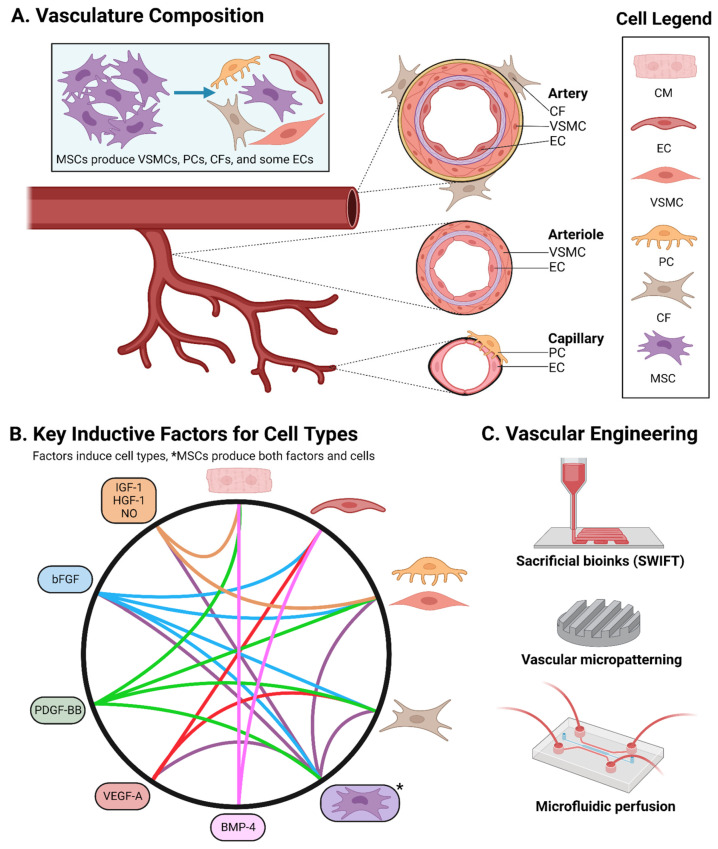Figure 4.
Vascularization Methods: (A). Vascularizing iPSC-CCTs is essential to improving their size and complexity through increased oxygen and nutrient availability. Native vessels come in various sizes and structures: arteries are large and possess external connective tissue layers; arterioles are small and also have an endothelium reinforced with smooth muscle; and capillaries are very small, with an endothelium supported by a basement membrane and PCs. (B). Factor addition is useful for vascularization. Inductive factors critical to respective cell types are as follows: BMP-4 for CMs and ECs; VEGF-A for ECs; PDGF-BB for VSMCs/PCs and MSCs; and bFGF for CFs and MSCs, while IGF-1, HGF-1, and nitric oxide/NO support CMs and EC-VSMC crosstalk. (C). Engineering approaches to vascularization include sacrificial bioinks (SWIFT) that dissolve away to leave channels for flow, branching vascular-like micropatterning, and the direct emulation of perfusion in a microfluidic chip. bFGF, basic fibroblast growth factor, synonymous with FGF-2; BMP-4, bone morphogenic protein four; CCT, constructed cardiac tissue, CF, cardiac fibroblast; CM, cardiomyocyte; EC, endothelial cell; HGF-1, hepatocyte growth factor one; iPSC-CCT, iPSC-derived CCT; iPSC, induced pluripotent stem cell; IGF-1, insulin-like growth factor one; MSC, mesenchymal stem cell; NO, nitric oxide; PDGF-BB, platelet-derived growth factor B form dimer; PC, pericyte; SWIFT, sacrificial writing into functional tissue; VEGF-A, vascular endothelial growth factor form A; VSMC, vascular smooth muscle cell.

